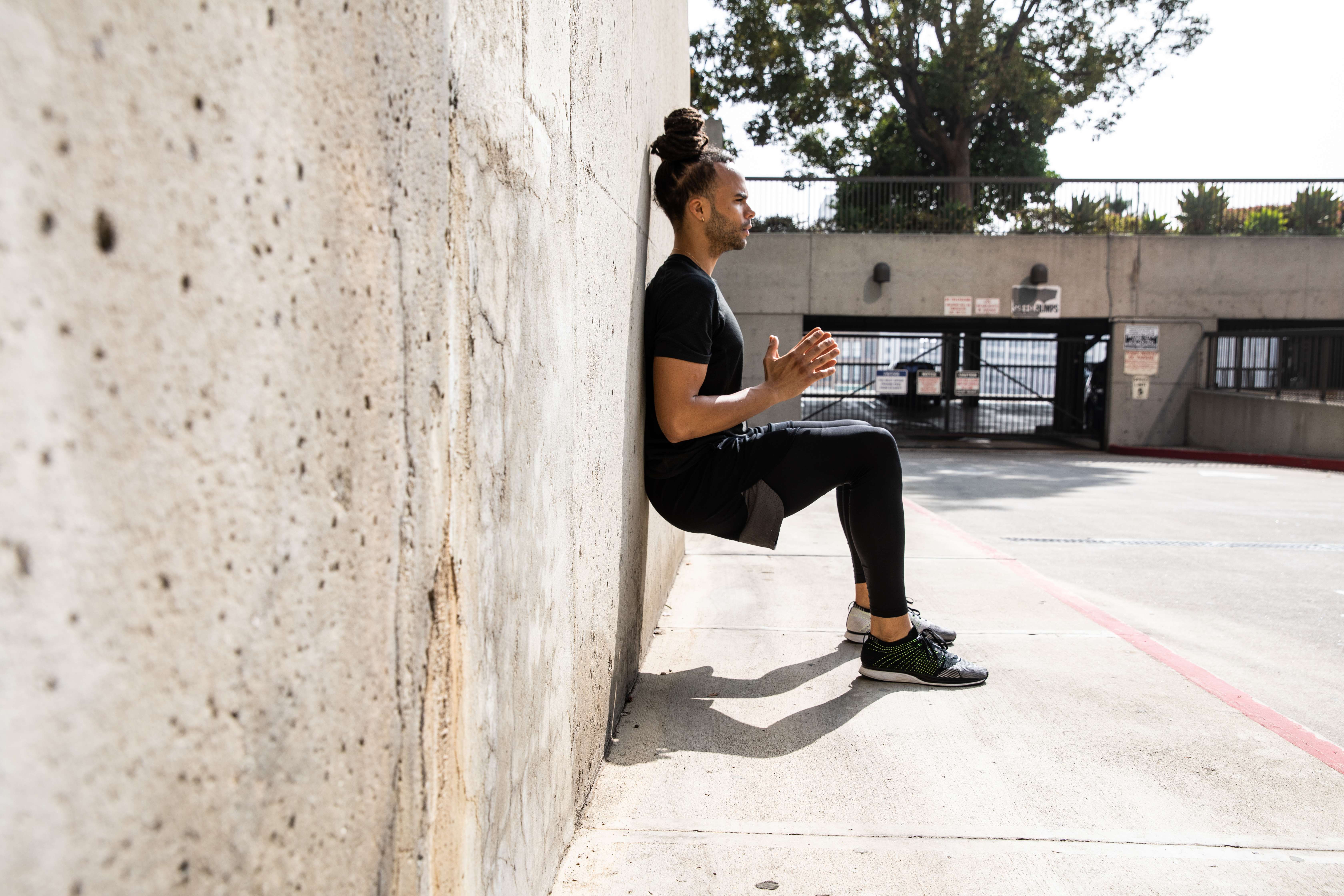We avoid the exercises we dread, and can’t say I’ve volunteered myself for a wall sit in at least a decade.
I’ll blame all the gym teachers and martial arts instructors who used to delight in lining classes up against the wall for a two-minute hold…which always felt three times as long.
But the move’s returned to my radar lately, on account of a buzzy study published in the British Journal of Sports Medicine. According to the research, isometric exercises have remarkable potential for reducing blood pressure, particularly for individuals with hypertension. And among the isometric exercises they explored, wall sits stood out as one of the most accessible and potent.
Suffice to say, it’s high time to bury those old feelings and put wall sits back on the fitness map. We explain why the move works, and how to plug it into your weekly routine.
The 10 Best Breathing Exercises for Sleep, Fitness and Calm
There are a lot of tricks out there. Keep these in your toolkit.The Benefits of Isometric Exercise
Isometric exercises — like planks, V-sits or overhead holds — work by contracting a set of muscles without any noticeable movement. Why are they so effective at countering hypertension? Researchers have some theories:
- Lowering Blood Pressure: Simply holding muscles in place seems to have a profound effect on blood pressure. The “local” blood vessels compress during the exercise, then dilate after, which prevents the stiffening of arteries. (Cardio can’t seem to replicate this benefit.)
- Time-Efficient: Workouts have trended shorter, more efficient and less clunky for a minute now. Add wall sits to the list — they don’t require any special equipment, and even a quick workout can result in noticeable benefits. This appears to be why the researchers expressly highlighted the move in their study.
- Strengthens Major Muscle Groups: Beyond improved heart health, wall sits target the thighs, glutes and core, helping in building strength and endurance. It’s a bodyweight move, full-body and functional, which amounts to buzzword bingo in the wellness world these days.
A Sample Workout
Here’s the 14-minute routine recommended by the researchers, which you can easily pepper into your regular workout regimen a few times a week. You’ll need a wall:
- Wall Sit: Hold a wall squat for two minutes.
- Rest: Take a two-minute rest.
- Repeat: Repeat the wall sit and rest cycle three more times, for a total of four cycles.
Make sure to maintain the same squat height for all rounds, starting with a perceived exertion level of four out of ten and ending at around an eight. You should feel reasonably exhausted by the end. Remember, don’t hold your breath while doing it.
Variations to Consider
If and when you’ve mastered the basic wall sit, consider adding some variations to keep things fresh or to challenge yourself further:
- Wall Sit with Leg Lifts: While in the wall sit position, lift one leg at a time to hip height and lower it slowly.
- Wall Sit with Dumbbells: Hold a pair of dumbbells in your hands to add extra resistance.
- Wall Sit with a Stability Ball: Place a stability ball between your back and the wall for added core engagement.
- Wall Sit with Medicine Ball Squeeze: Place a medicine ball or soft object between your knees and squeeze.
The Charge will help you move better, think clearer and stay in the game longer. Subscribe to our wellness newsletter today.
